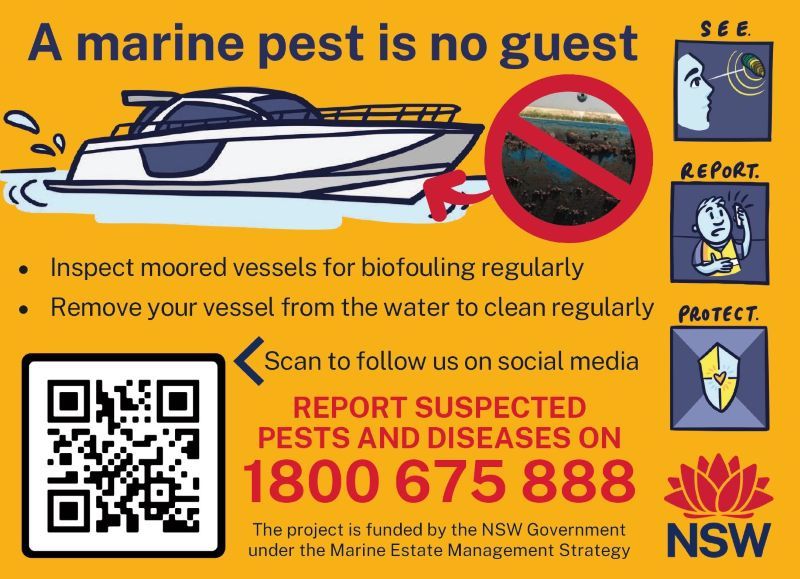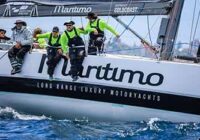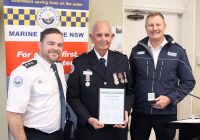Would you recognise an invasive marine pest if you saw one? Would you know how to minimise the risk of introducing or spreading a marine pest?
Most recreational boaters wouldn’t. That’s exactly what makes these pests such a threat.

In 2020, NSW Department of Primary Industry and Regional Development (DPIRD) Aquatic Biosecurity Programs engaged researchers from Charles Sturt University, to launch a marine biosecurity behavioural research study in New South Wales.
“Our goal was to understand social barriers and benefits regarding the management of marine fouling organisms on medium sized recreational vessels, to help reduce the spread of marine pests and diseases,” said Mr Nat Higgins, DPIRD Aquatic Policy and Project Officer.
“We found that while there is a good understanding among boat owners of responsibilities when protecting the marine environment, more communication about marine pests and how to identify and manage them was required.”
Marine pests travel via biofouling, the layer of marine growth that builds up on hulls, propellers and other submerged parts of a vessel.
Once introduced into new areas, invasive pests can damage delicate ecosystems, outcompete native species and harm industries like fishing and aquaculture.
The project sought to understand what helps boaters take action. The answer wasn’t just awareness. It was relevance, clarity and support.
“We found that many boat owners care deeply about the environment but often lack clear, accessible information about marine biosecurity threats and the simple actions to minimise the risks their recreational activities pose,” said Mr Higgins.
“In fact, more than 90% of boaters surveyed hadn’t seen any biosecurity messages online. They were far more likely to trust updates through email, boat clubs or marinas. Many also expressed their frustration about limited access to cleaning facilities and unclear reporting channels.”
These insights laid the foundation for an ongoing education campaign, one designed with boaters, not just for them.
Over the past five years, the DPIRD Aquatic Biosecurity Program’s team has taken a practical, targeted approach to marine pest awareness. Through digital tools, trusted publications and strong local partnerships, the team continues to keep boaters informed and engaged in protecting New South Wales waterways.
Explore these resources to learn more and take action:
- Marine Pest ID Cards: Identify priority marine pests and know what to look for
- Biofouling on Recreational Vessels factsheet: Understand how biofouling occurs and what it means for your boat
- Make Clean Part of Your Routine factsheet: Practical steps to reduce the spread of marine pests
- A Marine Pest Is No Guest social tile: Shareable content to raise awareness in your community
This work is part of the Marine Biosecurity Awareness Project, funded by the Marine Estate Management Strategy.








